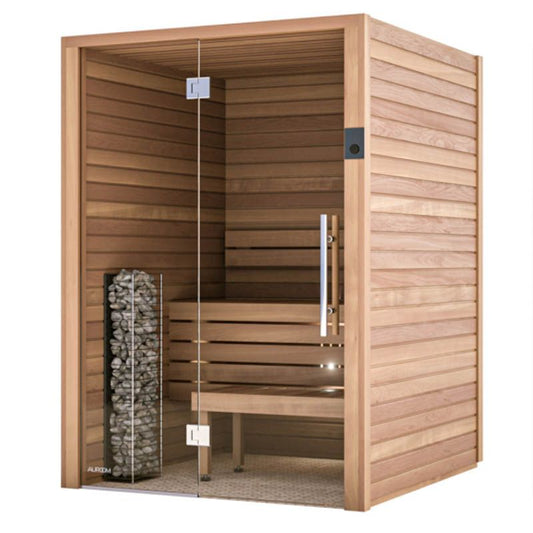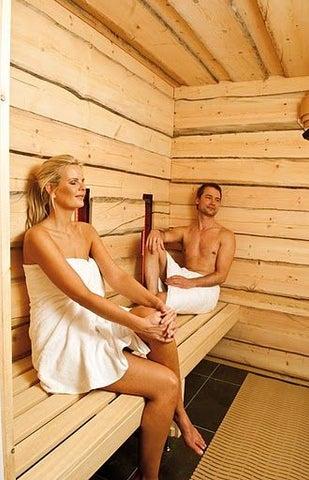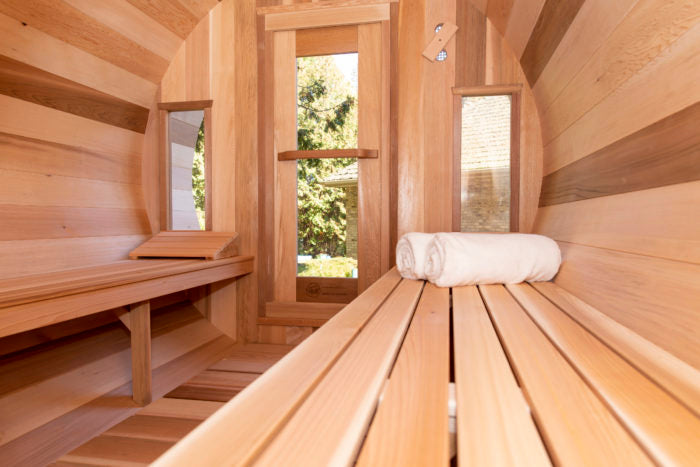A Biased View of Traditional Sauna
A Biased View of Traditional Sauna
Blog Article
The 10-Minute Rule for Traditional Sauna
Table of ContentsA Biased View of Traditional Sauna8 Simple Techniques For Traditional SaunaThe Of Traditional SaunaThe Main Principles Of Traditional Sauna The Best Strategy To Use For Traditional Sauna
The majority of the weight lost in a sauna is water loss and is re-gained upon rehydrating. Without a doubt sauna can be an essential part of a healthy weight loss program. To consider the differences in between traditional and IR saunas, I will certainly separate these into verifiable, academic, and fabricated differences.Therefore, the best point in the saunawhich goes to the ceiling directly above the sauna heateris typically between 185 and 190 F. Claims that a standard sauna goes beyond 200 F is merely not true and not applicable for electric saunas sold in the United States. The temperature level for a far-infrared sauna is generally established in between 120 and 140 F; nonetheless, unlike the standard sauna, the objective in and IR room is not to achieve a heat.

When a standard sauna has been correctly heated up, the sauna wall surfaces are cozy, the air temperature level has actually accomplished established temperature level and the rocks are super warmed. As a fascinating side note, the warmed wall surfaces and the rocks are producing far-infrared warm, combined with the heated air, to produce an "wrapping up warm".
3 Easy Facts About Traditional Sauna Explained
When the heat is accomplished, the components cycle on and off to maintain the high temperature level. The majority of conventional sauna users delight in putting water over the rocks to develop vapor to elevate sauna humidity levels. The advantages of putting water over the rocks consist of: making the room extra comfy, dampening the nasal flows, and permitting the use of aromatherapy by mixing crucial oils with the water.

When the energy goes into the body, it causes the body temperature to boost and eventually results in perspiration. In an infrared sauna it is necessary for the emitters/heaters to remain on almost frequently. Given that there is no mass of rocks to keep heat, the sauna will cool if the emitters turned off.
Things about Traditional Sauna
As pointed out over, the sauna bather in an infrared room intends to position himself in front of running emitters to get maximum gain from the heat. The heating time for both rooms can be very here are the findings various, depending upon how the spaces are utilized. For a typical sauna, a bather needs to permit 30-40 mins for the area to achieve a wanted temperature level and to properly pre-heat the rocks.

A well constructed sauna will usually achieve a temperature level of 150-160 F in about 30-40 mins. For hotter temperature levels, the space might require to warmth for a longer duration.
To some, 15 mins was "wasted" while the infrared energy warmed the timber panels instead than heating up a body, while others locate a pre-heated area to be more comfortable and believe an elevated starting temperature is necessary to start sweating. The length of suggested use for each room is about the exact same (10-15 mins per session); nonetheless, as a result of the lower air temperature levels and the ability to really feel the effects of infrared warmth much faster than a conventional sauna, it is not uncommon for an individual to spend a total of 20-30 minutes in an infrared sauna.
Some Known Details About Traditional Sauna

The typical price per kWH of electrical energy in the united state is approximately $0.11, so a 4.5 kW heater will set you back approximately $.50 to compete one hour, if the heating unit runs constantly for one hour. Normally a sauna heater will certainly run for 75% of the initial hour and 50% of subsequent hours on given that the components cycle once the established temperature level is attained.
A 2 individual far-infrared room is usually physically smaller sized than a standard sauna, typically about 4' x 4' or smaller sized. The IR heater is generally 1.5-1.7 kW making use of a 120 volt 15 amp plug-in solution. Given that the space can be used sooner than a sauna space, we will certainly think the space is utilized for to of an hour consisting of warm up time.
There is a hardly ever discussed difference in useful reference the social experience in between the two spaces. While our culture has shed several of the social advantage of the traditional sauna experience, it can be really socially fulfilling (Traditional Sauna). From family time in the sauna, to heart-felt discussions with loved ones, to sauna partiesthe standard sauna experience can bring about intimate mingling
Some Known Incorrect Statements About Traditional Sauna
Many greater end infrared areas consist of colored light therapy, you can look here noise systems and full-glass fronts.
Report this page